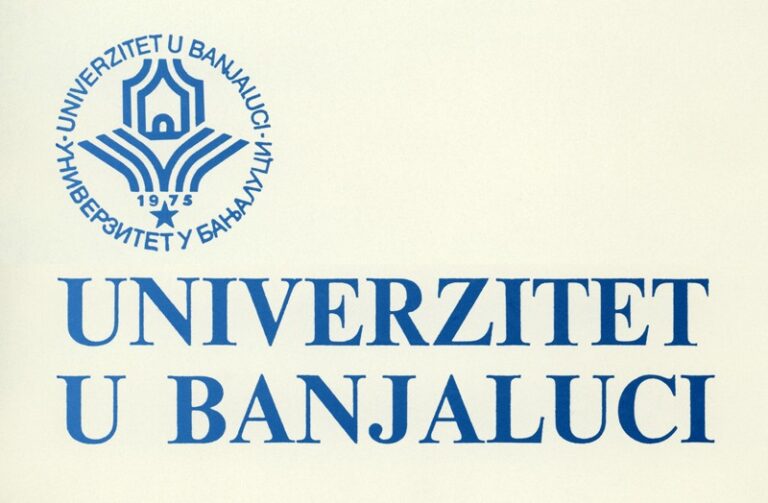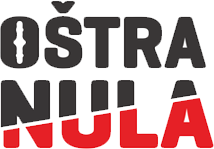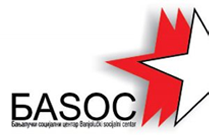On the proposal of the Executive Committee of the Municipal Assembly of Banja Luka, the Council of Associated Labor, the Council of Local Communities, and the Socio-Political Council, the idea of establishing the University of Banja Luka was accepted in 1974.
The president of the Initiative Committee was Seid Maglajlija, who at the time was the president of the Municipal Assembly of Banja Luka. By February 1975, a decision was made to establish the Faculty of Law, Faculty of Economics, Faculty of Electrical Engineering, and Faculty of Mechanical Engineering. Shortly thereafter, other faculties were founded as well. The University was officially inaugurated on November 7, 1975.
The development of Banja Luka as a city dates back to 1494 when it was first mentioned in a charter by the Hungarian-Croatian King Vladislav II. However, throughout these periods, the growth of schools in Banja Luka, and later the University, gained significant momentum only in the early 19th century. One of the notable figures from that time was Ivan Franjo Jukić, now largely forgotten, whose bust is located on Gajeva Street. He was an ethnographer, travel writer, historian, collector of folklore, initiator of the first literary magazine in Bosnia named “Bosanski prijatelj” (Bosnian Friend), and actively worked on establishing schools and printing presses. Alongside Jukić emerged Vaso Pelagić, one of the founders of the Theological Seminary in Banja Luka. His vision was for this Seminary to become a small university with the mission of spreading revolutionary ideas that called for the fight against ignorance and tyranny. Vaso Pelagić was one of the first utopian socialists in Banja Luka, whose theoretical ideas paralleled those of the great French utopian socialists such as Fourier and Saint-Simon. It is also noteworthy that during the same century, the Trappist movement appeared in Banja Luka, establishing their monastery and schools aimed at educating the largely illiterate population. Together with Ivan Franjo Jukić, Vaso Pelagić, and later Petar Kočić, we must also mention the Trappist abbot Franz Pfanner. These great figures of Banja Luka’s thought and culture were also prominent leaders of social movements for emancipation as well as the industrialization of the entire city.
The harsh material conditions and the pressures of imperialism, both Ottoman and later Austro-Hungarian, led to significant social unrest. This period saw numerous social movements, peasant uprisings, and activities by various nationalist, civic, and socialist groups. Despite relatively rapid urban development in the early 20th century—with the construction of landmarks like Banski Dvor, the Ban’s Administration Building, the Health Center, and the Theater of the Vrbas Banovina—these advancements had little impact on improving the social status of the population. The majority of the population remained illiterate, and most lived off agriculture, while the urban working class was relatively small. This situation persisted until the onset of World War II and the accompanying revolution.
Education during this period was largely confined to private, religiously oriented schools, leaving much of the rural and working-class youth without access to these privileges. From the 16th century to the beginning of World War II, educational institutions included religious schools such as Muslim mektebs and madrasas. Later, the First Serbian Confessional School for boys and the Catholic Elementary School associated with the parish office were established. Toward the end of Ottoman rule and under Austro-Hungarian occupation, laws allowed for the establishment of various types of schools. However, these were still limited to families with the means to educate their children. By 1913, several schools had been established in Banja Luka: the first Imperial School in 1880, followed by the second in 1898, and the third in 1899. The first Girls’ Elementary School was opened only in 1905. The first Trade School was established in 1885, and the prestigious Gymnasium (Velika Realka) in 1895. By the start of World War II, additional institutions had been founded, including the Agriculture School in 1939, the Teachers’ School in 1926, and the Mixed Civic School in 1928.
The progressive youth established their own sports and cultural societies, and they were mostly united around the revolutionary ideas of socialism, which brought by utopian socialism, represented by Vaso Pelagić, and by scientific socialism, which prevailed in the workers’ movement and was embodied in Yugoslavia by Svetozar Marković. One of these organizations was KAB (Club of Academics of Banja Luka). This organization, which brought together the broadest layers of Banja Luka’s students, worked not only in the fight for free thought but also in the fight for better living conditions for Banja Luka’s students and the wider community. These students, who mostly studied in Zagreb and Belgrade, made Banja Luka a center of student rebellion, revolutionary work, and the fight against domestic nationalisms. Coming from different ethnic groups, due to their revolutionary work, they were first victims of the January 6th Dictatorship, then the terror of the Independent State of Croatia (NDH), but in the end, they achieved a revolutionary victory. Although by the end of World War II, partisans educated the people through their schools, the first regular school year in liberated Yugoslavia began in the fall of 1945. According to the 1948 census, about 50% of Banja Luka’s population had no education, and only 12 people had a higher education.
It took the city five years to get back on its feet after the revolution. The restoration of economic, political, and social life required significant effort, prompting the new communist authorities to rebuild existing schools and open new ones. However, to extend beyond basic education, in 1950, at the initiative of the Workers’ Association of the Banja Luka District and the City and District People’s Committee of Banja Luka, as well as the Ministry of Education of the Government of SR Bosnia and Herzegovina, the Pedagogy College was established in Banja Luka. This was the first higher education institution in Bosanska Krajina. The first dean was Professor Branko Vranješević. Following this, the Agriculture College was founded in 1960, along with the Economy and Commerce College that same year. It took ten years for Banja Luka to train new workers capable of self-management, and through the process of opening new companies, the need arose for the formation of new educational institutions to produce new personnel. Interestingly, the companies that signed the Self-Management Agreement on labor organizations in the economy and social activities for the establishment of faculties and universities included INCEL, Čajavec, Jelšingrad, Vrbas, and others.
In 1961, by decision of the People’s Committee of the Banja Luka District, the first faculty was established – the Faculty of Engineering. In collaboration with Complex Organizations of Associated Labor and Self-Managing Interest Communities, over 8,000 students and pupils graduated and secured employment during the ten years of Banja Luka’s higher education development. Between 1960 and 1970, the Study Center of the Faculty of Law from Sarajevo was established at the Center for Workforce Training in Banja Luka in 1965, and the Study Center of the Faculty of Economics was founded in 1968 at the Workers’ University in Banja Luka. Thus, during this two-decade period of development, all the necessary conditions were created for the formation of new faculties and eventually a university.
The post-war matrix of socialist development followed Lenin’s thesis of “peace, bread, and land”. This meant uniting all working masses around a single idea of social development aimed at creating dignified living conditions for workers. Faculties and schools were not established and maintained solely for the market, as they are today. People understood that they needed to develop a strong economy, integrate every branch of industry into a planned system, and to make this economy function, they had to acquire knowledge in all areas of human life. For this reason, economic entities (OOURI and SOURI) opened schools, educational centers, and eventually universities, as well as workers’ libraries, with the goal of creating scientific and labor personnel capable of contributing to social production. By linking with local communities that dealt with general issues of the working masses’ lives, a planned system of social life was established. A young person would therefore be studying for a job that was already waiting for them in advance.
This self-managing development encompassed the entirety of Bosnia and Herzegovina and Yugoslavia, and the idea of forming the University of Banja Luka arose because the northern and western regions of Bosnia, with a population of 1.3 million, required educational and higher education facilities. In 1974, the idea of establishing the University of Banja Luka was accepted based on a proposal by the Executive Committee of the Banja Luka Municipal Assembly, the Council of Associated Labor, the Council of Local Communities, and the Socio-Political Council. Seid Maglajlija, the then-president of the Banja Luka Municipal Assembly, served as the chairman of the Initiative Committee. However, for this to be realized, the authorities at the time had to draft a Report on the Socio-Economic Justification, a Self-Management Agreement on Association into the University, and finally, the University Statute. By July 1974, the Initiative Committee held its first meeting, defining the university’s primary tasks. Some of the conclusions were that the fundamental function of the university would be educational and scientific activities, information and documentation services, development of teaching and scientific libraries, publishing, cultural and educational activities, and healthcare services for all university staff and students. That same year, the Banja Luka Academic Club held a forum titled “The University Today”. By February 1975, the decision to establish the Faculties of Law, Economics, Electrical Engineering, and Mechanical Engineering was put forward, with other faculties soon following. The Faculty of Medicine was established in the fall of 1978.
After two years of extensive preparations, the University was officially opened on November 7, 1975. Before the formal opening ceremony, the university’s leadership was selected. The rector was Professor Dragomir Malić, with vice-rectors Professor Dr. Mićo Carević and Kjazim Krajišnik. Dr. Rajko Kuzmanović was appointed as general secretary, Živko Radišić as president of the Assembly, and Mr. Sabahudin Osmančević as president of the Executive Committee. The formal inauguration of the University of Banja Luka was conducted by Rato Dugonjić, then-chairman of the Presidency of SR Bosnia and Herzegovina. It took 40 years to fulfill the words of the Banja Luka Academic Club, first expressed in 1935: “We want to serve social progress, not social obscurantism and reaction. We want our work to be genuinely useful to society. We seek to make modern scientific truth the property of the broadest masses. We demand the freedom of our cultural work and the provision of a cultural foundation. We did not come from Mars; we are the sons of this land, part of this people, with bare hands and empty pockets. We want to work in the interest of our country, the freedom, and the progress of our suffering people”.
Although the University initially lacked sufficient staff, within its first five years, it grew into a reputable institution attracting students from across the region. Nearly one-third of the students came from outside Bosanska Krajina. In its first year of operation, the University recorded over 7,000 student enrollments. Faced with staffing shortages, the University managed to train its best students and researchers, enabling them to work at the University. By 1980, the goal was for the University to have 125 PhDs. In line with the University’s growth, the self-governing authorities worked to secure over 250 apartments for new university staff. This policy mirrored that of companies that allocated housing to their employees. However, the self-governing authorities did not focus solely on staffing. Efforts were also directed toward improving student living standards. Initiatives included strengthening the Central Youth Cooperative, constructing student dormitories, increasing scholarships and the number of recipients, and building sports and recreation centers, as well as a student clinic. The goal was to prepare students for social activities. In 1977, the Center for Student Social Activities (CEDUBAL) was established, focusing on extracurricular activities in culture, arts, and international exchange. That same year, the Student Theatre was founded, followed by the Academic Choir in 1979, and later the University Sports Association “Rade Ličina”.
From 1980 to 1985, the University closely collaborated with self-governing authorities to strengthen the University’s self-management relations. Efforts were made to better integrate the Law on Associated Labor with the Law on Higher Education, ensuring that graduates could immediately integrate into all branches of the economy upon completing their studies. This proved to be highly successful, with the annual student growth rate reaching 5%.
The University’s positive development came to a halt with the onset of war. Interestingly, the University was named after the national hero Đuro Pucar Stari. However, this legacy was erased in the early 1990s. The political and economic crisis in Yugoslavia, coupled with the rise of bureaucracy increasingly sympathetic to nationalism, affected the University of Banja Luka as well. War crimes and expulsions also affected non-Serb students, and many students were directly drawn into the war.
At the end of 1994, a Student Brigade was formed within the First Krajina Corps of the Army of Republika Srpska (VRS). This infantry unit was sent to the Bihać front, where it became entangled in the fratricidal conflict driven by domestic nationalist elites. Emerging from the war with deep traumas and lost youth, these individuals faced the plundering privatization process, the dismantling of self-management, and the severing of all ties between the University and the economic base. New generations were met with capitalism, brought by the bloody hands of nationalism, and students were left to navigate a market-driven environment on their own. Upon completing their studies, graduates no longer had guaranteed jobs allocated by the self-government, nor could they rely on state-provided housing. They now had to fight for survival and pursue their education independently.
However, these were not the only changes at the University. The new headquarters of the University became the former “Mladen Stojanović” barracks, which had been renamed “Rajko Balać” during the war. This barracks and its facilities were transformed into the new university campus.
Over 45,000 students have graduated from the University of Banja Luka. However, thirty years of market-driven anarchy have left many graduates unable to find work in the fields they studied for. A large number of them have never worked in their area of expertise. The lack of planned workforce development to meet societal needs has led to oversaturation in certain academic programs and the collapse of others. By the end of 2023, it was recorded that the Republic of Srpska entity had lost 18,000 students over the past decade. Fewer people are enrolling in the University as many leave the country in search of jobs that can provide a living. Compared to the previous year, 2024 saw another decline in student enrollment, with projections indicating that 100 fewer students would enroll compared to the previous year. As a result, life at the University today is far from ideal. Students face inadequate housing, food, cultural and sports activities, and a declining quality of education. The spirit of the University of Banja Luka has been overshadowed by nationalism, historical revisionism, and interests of political parties. The former Communist Party and the League of Socialist Youth of Yugoslavia have been replaced by nationalist profiteering parties and student organizations-parliaments dominated by individuals whose primary goal is to strengthen the party youth. These groups rarely act in the interest of students or the public.
This year marks the 49th anniversary of the University of Banja Luka.



